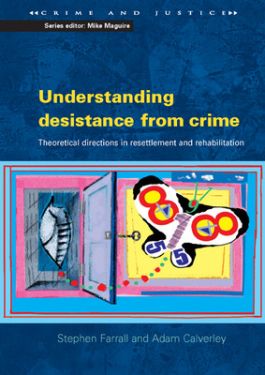Understanding Desistance from Crime
1st Edition
0335219489
·
9780335219483
© 2005 | Published: December 16, 2005
Why do people stop offending?What are the processes they undergo in stopping?What can be done to help more people who have offended put their pasts behind them?The growth of interest in why people stop offending and how they are resettled following p…
Read More
Request Review Copy
Receive via shipping:
- Colour, print bound version of the complete text
Preface & Acknowledgements
Dramatis Personae
Chapter One: Getting to Grips with Desistance
Chapter Two: Life After Probation
Chapter Three: The Long-term Impacts of Probation Supervision
Intermezzo: The Impact of Imprisonment
Chapter Four: The Existential Aspects of Desistance
Chapter Five: The Emotional Trajectories of Desistance
Chapter Six: Citizenship Values and Desistance
Chapter Seven: Criminal Victimisation and Desistance from Crime
Chapter Eight: Understanding Desistance from Crime
Methodological Appendix: Relocating our Sample
Bibliography
Index
Dramatis Personae
Chapter One: Getting to Grips with Desistance
Chapter Two: Life After Probation
Chapter Three: The Long-term Impacts of Probation Supervision
Intermezzo: The Impact of Imprisonment
Chapter Four: The Existential Aspects of Desistance
Chapter Five: The Emotional Trajectories of Desistance
Chapter Six: Citizenship Values and Desistance
Chapter Seven: Criminal Victimisation and Desistance from Crime
Chapter Eight: Understanding Desistance from Crime
Methodological Appendix: Relocating our Sample
Bibliography
Index
- Why do people stop offending?
- What are the processes they undergo in stopping?
- What can be done to help more people who have offended put their pasts behind them?
This book is both an introduction to research on desistance, and the report on a follow-up of two hundred probationers sentenced to supervision in the late 1990s. The reader is introduced to some of the wider issues and debates surrounding desistance via a consideration of the criminal careers of a group of ex-offenders. This lively engagement with both data and theoretical matters makes the book a useful tool for both academics and students.
The book will appeal to undergraduates, postgraduates and academics studying criminology, criminal justice, sociology, social work, social policy and psychology, as well as trainee probation officers.

